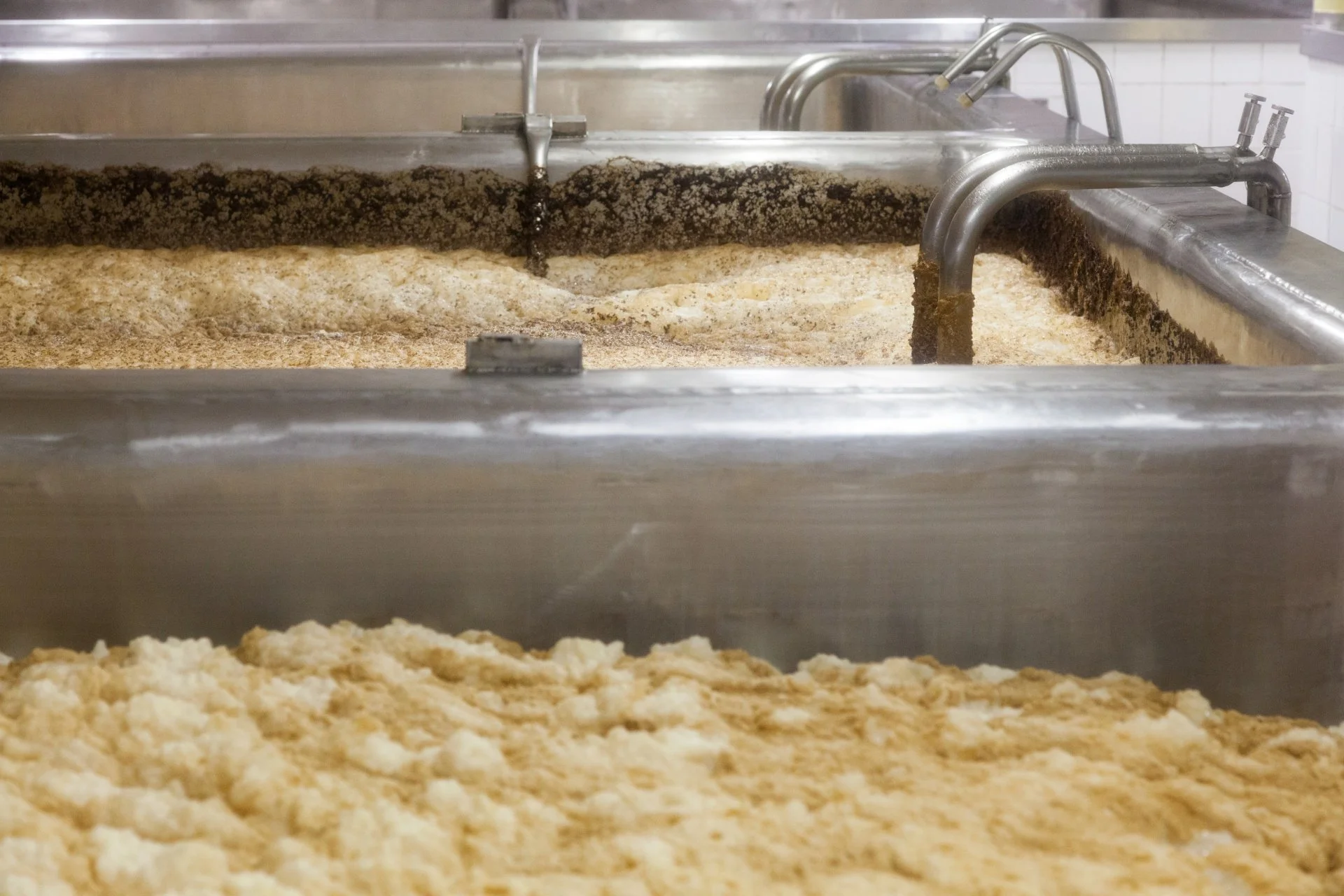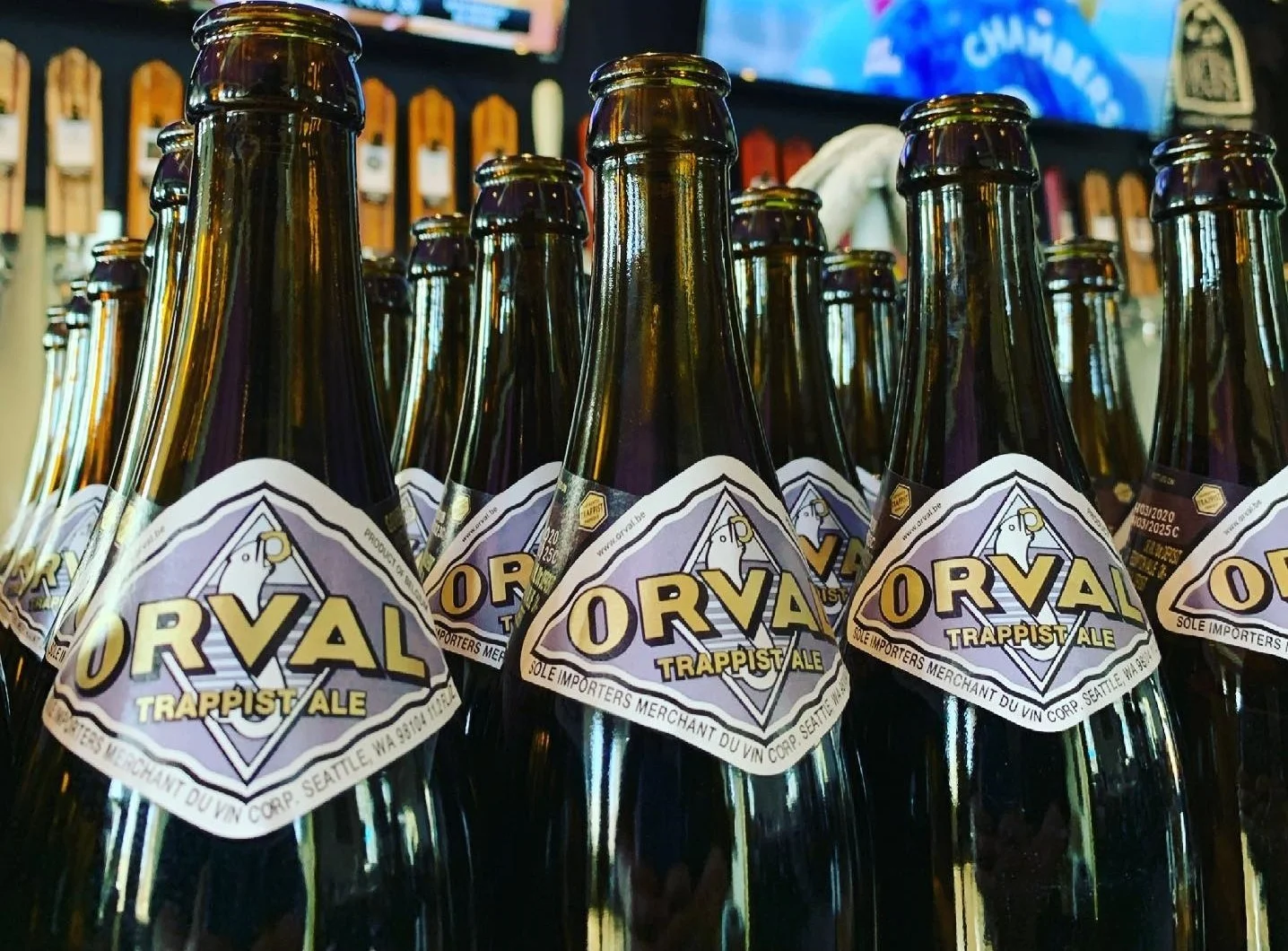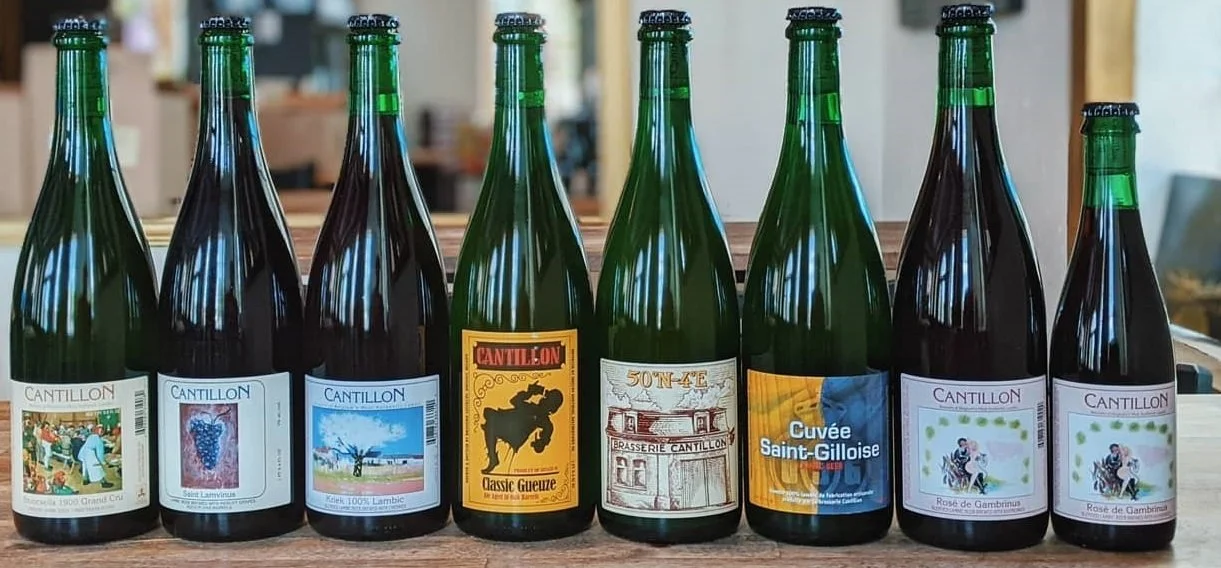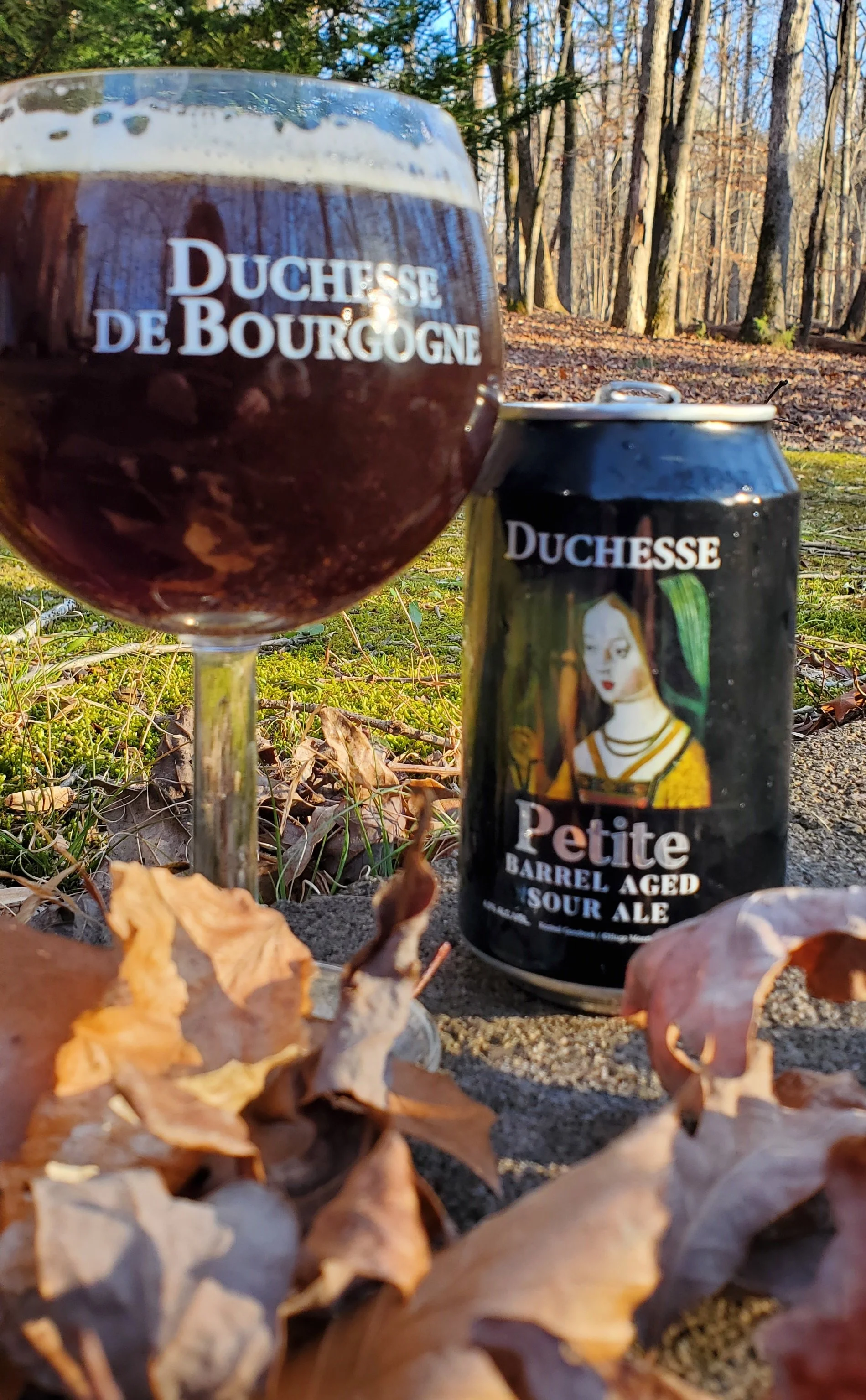So…who’s this Brett guy anyway?
If you’ve been hanging around breweries and craft beer bars lately, you’ve probably heard people mention Brett - particularly in reference to sour styles of beer. But what is it? What is it doing in beer? What’s all the hype about?
Brettanomyces, or Brett for short, is a type of yeast. In both brewing and winemaking, yeast is the main facilitator of fermentation. It feeds on the sugars present in the wort (brewed beer before its fermented) or grape juice and yields both alcohol and carbon dioxide as byproducts. Brettanomyces is prized in the brewing industry for its ability to produce acetic acid and other compounds that give beers all kinds of unique, funky and exciting flavors and aromas.
Image: Open Fermentation
Positive descriptors such as earthy, fruity, tart, floral and woody are often associated with Brett beers, as are some seemingly negative ones, like barnyard, hay/horse blanket, funky cheese and musk. Believe it or not, even those qualities can give both beer and wine very desirable, deep flavor profiles when present in small quantities. It is Brettanomyces, often along with the help of lactic acid-producing bacteria, that gives many of your favorite sour beer styles, their unique and dry funkiness that you can’t quite put your finger on, or get enough of. World famous brews like Belgian Lambic, Gueze, Flanders Red, Oud Bruin, Saison/Farmhouse, and many American Wild Ales are all made with this rockstar fungus.
But let’s back up for a second. Where does it come from? In the wild, Brett grows on the skins of fruit. Brett is not often intentionally introduced to wine, and its presence, at high enough levels, is often mistaken for cork taint or spoilage. It sometimes makes its way into beer and wine as a contaminant, usually carried by insect vectors – think fruit/drain flies – or hiding inside improperly sanitized barrels. Brett is generally only intentionally used in significant quantities for some Chardonnay, “natural wines” and a few red varieties.
However, in the beer brewing world Brett is intentionally sought after for many open fermented beer styles, particularly lambics and Flanders Reds. While American craft brewers seek out Brett hoping to add a unique complexity to their brews.
It is important to note that not all Brett beers are necessarily sour. When Brett is in the presence of large amounts of oxygen, acetic acid production can be high, and therefore producing the tart and funky flavors most often associated with this yeast - but creative brewers have learned that Brett will only yield a slight tartness when utilized in different ways.
Bear in mind, however, that Brett beers may not be for everyone - at least at first. Owner of Carolina Beer Temple, Rob Jacik, had this to say about his first encounter with a true Belgian sour-ale:
About 20 years ago, back when I was almost exclusively a pilsner, pale ale and IPA drinker, I was allured by the label of the Belgian classic, Duchesse de Borgogne. Having no idea what a sour-ale was. I purchased what appeared to be an exquisite brew.
After enjoying a few IPAs, I decided to crack open the bottle of Duchesse for the first time. To me, it smelt like vinegar and tasted terrible! I was appalled! I thought the beer had gone bad and I had no idea a beer could sour like that.
I asked around only to find out that Duchesse is one of the best examples of a Flemish Red in the world! What? It’s terrible, I protested.
With a bit of research and quite a few more tastings, I learned all about sour-ales and how they are deliberately made to taste funky and tart. These taste nothing like their pilsner and IPA cousins in the craft beer world - but are equally regarded as true masterpieces of brewing in their own right!
In time, I have grown to truly appreciate a good sour-ale - tangy, crisp and surprisingly refreshing - with Duchesse de Borgogne being regarded as one of the best sour-ales I know!
- Rob Jacik
Now, let’s talk about some of our favorite Brett beers.
Orval
Orval is perhaps the most acclaimed and imitated Brett beer in the world. A classic, and the gold standard for Trappist Abbey Belgian Sours. A beautiful coppery-orange color, slightly cloudy and pours with a huge, foamy head. Beautifully tart and fruity but well balanced with earthy and herbal notes as well as a peppery hop bitterness.
The complex nature of this beer’s fermentation makes it subject to aging - typically it reaches a peak somewhere between 3 and 5 years. Over time the flavor profile changes, making it even more desirable. At some of the finer beer bars of the world you can order an Orval by its year!
At Carolina Beer Temple we celebrate “Orval Day” annually and offer vintages from years past. In 2023 we’ll be celebrating on Saturday, March 25th.
Brasserie Cantillon’s Classic Gueuze
If you’re familiar with wild or spontaneous fermentation, you’ve probably heard the name, “Cantillon.” There’s a good reason: Brasserie Cantillon has been pioneering the Lambic Style for over 100 years. Their Classic Gueuze is no exception - a blend of 1, 2, & 3 year old Lambic (spontaneously fermented with naturally occurring yeast, i.e. Brettanomyces, Lactobacillus, etc). The Classic Gueuze is eminently refreshing, complex, and pleasantly sour. Aromas and flavors of barnyard hay, green apple, apricot, citrus zest, and oak scintillate the palate while no one flavor dominates.
Brouwerij Verhaeghe’s Duchesse de Bourgogne
An all-time classic in the world of traditional sour ales; Duchesse de Bourgogne remains one of the benchmarks for the Flanders/Flemish Red Ale. Sharp notes of balsamic vinegar and acetic acid give way to delicate notes of sweet & tart cherries, cocoa, and oak. The funky brightness of and dryness characteristic of Brett yeast plays a supplemental role, enhancing the vinegary punch while enticing you to drink more.
Duchesse is aged for many months in oak casks. Although rare and hard-to-find, the base beer is sold as Vichtenaar. Duchesse is also available in two varieties - Duchesse Cherry and Chocolate Duchesse Cherry.
Brouwerij 3 Fonteinen’s Oude Gueze
Subtle, delicate and dry. This may be the gold standard for this style. While mildly funky on the nose, it’s beautifully balanced in flavor with white wine, apricot, peach, Granny Smith Apple and white pepper notes coming through. The finish is dry and crisp, with a prickly carbonation. Expensive, but a must-try splurge.
And be aware of the varieties offered including the traditional Oude Gueze Cuvee, Oude Kriek (Cherry) and Oude Gueze Golden Blend amongst others.
Brasserie de Blaugies’ La Vermontoise
This classic, old-world style Saison, brewed in collaboration with Hill Farmstead Brewery in Greensboro, Vermont, is one of my favorite beers of any style. Its highly carbonated and pours a foamy head with a hazy golden-yellow body. It’s effervescent and uber-dry. The aroma is that of grassy hay, citrus fruits, herbal hops and pepper. The flavor profile follows suit with a crackery/grainy malt character and a decent dose of funky banana esters and musk. Extremely dry finish that begs for another sip. Very complex and delightfully weird. Buy it if you see it!
OEC Antioch Flanders Red
Another classic sour style originating in the Flemish-speaking (a dialect of Dutch) region in Belgium. OEC (Ordinem Ecentrici Coctores) Brewing out of Oxford, Connecticut knocks it out of the park with their take on this style with Antioch. Its aggressively sour, almost vinegary, but in the most mouthwatering and enticing way that makes you want to keep sipping. Deep red/ruby in color with a fruity nose and with deep, earthy, dark cherry, red wine, funky, and woody notes. Antioch is made from a blend of three different red ales, all conditioned over red wine barrels, giving it a delightfully complex and dry finish.
Cheers!
Author: Trevor Wigle
Contributors: Ken Startin, Rob Jacik







